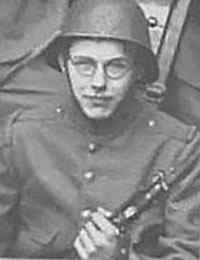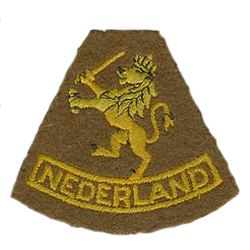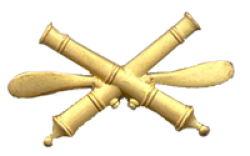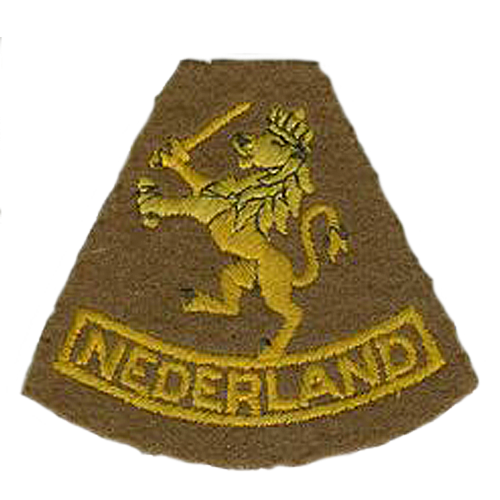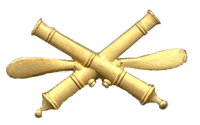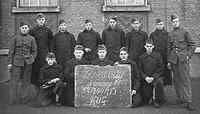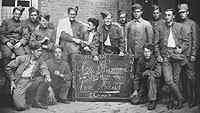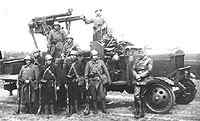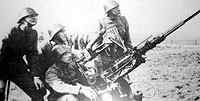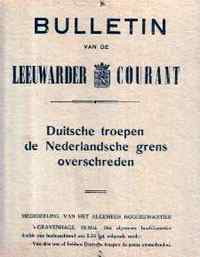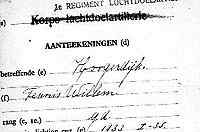I was born on November 28th 1913 in Oegstgeest and deceased on march 27th 1984 in Leiden, The Netherlands. After 6 months of being a recruit in the army I finished my military training and had achieved the status of marksman 1st class with Canon, machinegun, carabine and pistol. I was also qualified as a gas desinfector. During the pre mobilization I was stationed on the, the de Kooy - Fort Erfprins airfield in Den Helder. The last place I was stationed was the secret airfield in the municipality Slootdorp in the Wieringermeer area. That is where this story took place. We started mounting and setting up the machineguns at 05:00 am, because we had never actually fired this type of machinegun (Spandau 1914/1918) before, we first had to adjust the springs. After fifteen minutes the springs had been set and the machineguns were operational.
At 10:00 am we received orders to move out to Friesland. I was send to the blacksmith of the village to have our bayonets sharpened like razors and to have the Dutch lions removed from our helmets. This was done because experience learned that the most lethal shots came from bullets that were aimed at the lions. The staff from the Won's barrage had arrived and what had been left behind was a sergeant who was in charge of a handful of men that stayed behind. No German had been sighted so far at least that was what the remaining soldiers told us.
Sixteen soldiers a sergeant and a 19 year old standard bearer, all packed up our things and moved to Friesland. I was riding on an ammunition truck loaded with 4 tons of ammo. At the 'Afsluitdijk' we waited until dusk and crossed it with all our lights turned off. We radioed in our location and that we were on the way over. The bridge had already been blown up and the Afsluitdijk was littered with bits and pieces of equipment from the forces at the Won's barrage who had to retreat. The new DAF artillery tow trucks build on Ford and Chevrolet chassis had been driven off into the sea and the docks. I had read in the material overview that we were supposed to be low in equipment and vehicles, but this massive display of abandoned equipment was totally new to me. At 01:00 am our platoon entered the barrage.
The machineguns were placed into position in the second line of defense and the guns were mounted in the first line. The Swiss made guns, the 20mm caliber Oerlikon's, came from the voluntary anti aircraft artillery of Leeuwarden, and paid for by the inhabitants of Leeuwarden.
In our second line of defense were trucks and busses which later turned out to be filled with moneybags that came from various banks in the surrounding area. The infantry took care of making foxholes and had camouflaged them with green bags so that they could not be seen from the sky. The Germans did not know what hit them when the first one came into firing range of our machineguns at 05:00 am that next morning. The first shots struck gold. Right from the start two German planes went down in the Wadden Zee, and two more circled down in the direction of Leeuwarden followed by thick white smoke coming out the planes. Their next attack was done in a different way a few from the North and a few flew in from the South. Like a fine tuned clock and without previous planning, the Oerlikons took out the planes coming in from the North, and we took care of the planes flying in from the South. Three more planes went down in the Wadden Zee and one returned heavily damaged towards Leeuwarden. At the same time the infantrymen had not stood still. They made a complete fake battery in the bunker of stovepipes . These could turn and even emit smoke.
Above our heads a reconnaissance plane flew over and transmitted the coordinates of the fake Battery and seconds later four German planes drew near heading for the coordinates of the so called target resulting in two more planes in the ZuiderZee, and two more fleeing, because they did not know where the fire was coming from. Meanwhile there had been a big attack on the Afsluitdijk, but we did not see any of it, although we did hear the noise! The Germans soon realized that the attack was not going anywhere so they changed the front of the attack towards our field artillery and our bunkers. It has to be said that they fired with pinpoint precision into the firing gaps of the bunker, at no avail, for we simply closed the gaps with thick ironbolted sheets of metal. The captain called the Palace in Den Helder and straight after his call we got artillery and air support from a figtherplane from the navy who was stationed near by.
Then, the order came for the cease fire.It was over. I gave the driver of a taxi from the Eltax Company in Leiden who was there at the time, a note for my wife, to let her know that everything was okay, and that I was still alive! We had to withdraw from the Wieringermeer area. But how? For we did not have any means of transportation. My sergeant send me back to our first line of defense to see if I could organize some sort of vehicle. I slipped quietly over the docks and there to my surprise I spotted a Ford V8 truck belonging to a potato firm from Leeuwarden with a German behind the wheel. I yelled as hard I could: "Troop Transport!" the German looked up leaped out of the truck and ran for his life, thinking a whole platoon came back to get their equipment. I got behind the wheel and drove over the docks to our troops. After everybody had got onboard we left for the Island of Wieringen.
There we were stationed in a school. The next sunday my wife, father and mother came to visit me. The following day I surprised the whole family by stepping of the citytram in the Dorpstraat in Oestgeest, I was home! I felt lucky, I had made it back in one piece, the war was over for me. My wife was pregnant and our son Willem Teunis Hoogerdijk was born on october 21st 1940 I had been truly blessed. His son, Willem Teunis Hoogerdijk
